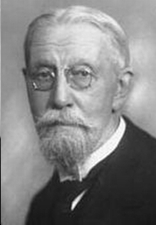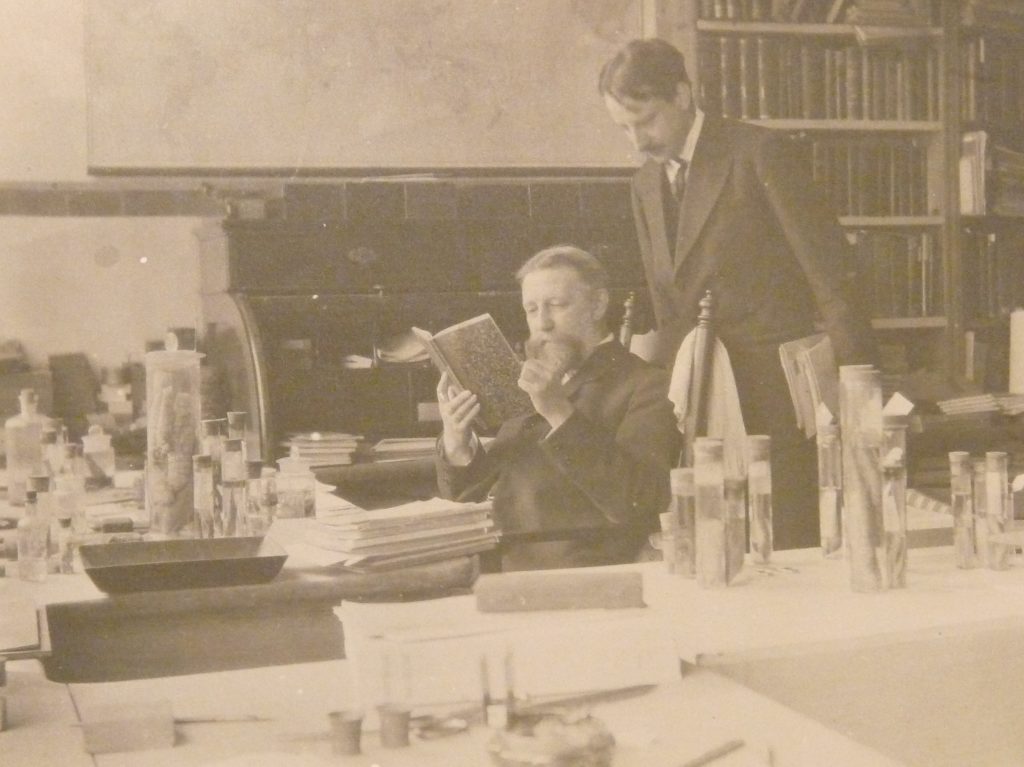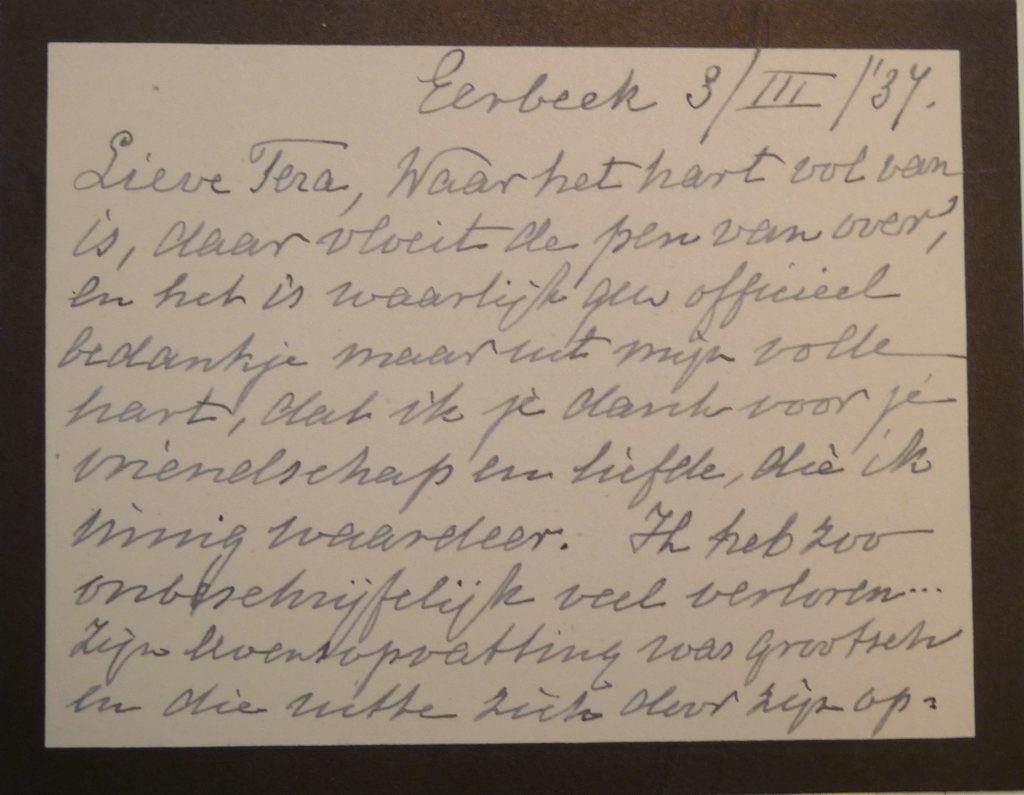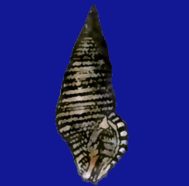In the previous blog we were introduced to Pico van der Feen. In this blog we say goodbye to Max Weber

Max Weber is one of the most important Dutch biologists of the early 20th century. As the Royal Academy of Sciences puts it: The last decades of the 19th century were the heyday of comparative anatomy and embryology. Biologists looked for examples and evidence of Darwin’s theory of evolution and compiled family trees of every living thing.
Weber’s career has revolved around that descriptive zoology. He did not concern himself with the formation of theories: according to him the time was not ripe for philosophy. After all, there was still so much practical research to be done that it was a waste of time to philosophize about the how and why of evolution. Weber’s greatest achievement lies in the enormous amount of data he collected. What is striking about his scientific publications is the wide variety of topics. He has written about almost all major animal groups.
Weber has done important work in zoogeography, a new branch of biology. His in-depth analysis of the fauna of the Indian archipelago led to the conclusion that the area is a mixture of part Asian and part Australian origin. In doing so, he disproved Wallace’s theory that these areas were sharply separated from each other. Moreover, according to Weber, the border area between the two fauna areas lay more in the direction of Australia. The ‘Weber line’, which biologists speak of to this day, therefore does not do justice to the theory. The development of zoogeography was greatly stimulated by the many expeditions made during that time. The Siboga expedition was the most important of these.
Weber retires in 1922. After that he lives with his wife Anna at the Estate Eerbeek, where Tera is also a welcome guest. Even when Tera goes to the Indies, she keeps in touch with the Webers, she then receives fl. 1000 from the Webers for an extra study trip, for example to Prashad, but as we have seen she does not use that. The Webers continue to interfere with the zoological museum and with Tera and visit Amsterdam regularly. When Max Weber turns 70, there is a special issue of the journal “Contributions to Zoology”. In addition, he receives a public letter from 35 English zoologists in Nature, who collectively give praise and conclude with: “Your solid learning has upheld the great scientific traditions of your country, your investigations have influenced and stimulated many of us, your broad interests, your singleness of purpose, the simplicity of your life and your genius for friendship have set an example to us all”
In Eerbeek, the Webers have assembled a colorful collection of plants and animals. Scientists from all over the world visit the estate, and after the usual long walks and zoological excursions, they can use the Webers’ own laboratory for their research. On the photo Weber and de Beaufort in the lab, date unknown.

Entertaining are the anecdotes about the exotic animals that inhabited the estate. There was a monkey Simpie and a civet that sometimes jumped out from under the sofa to the horror of visitors. Outside, “Piet” the cassowary (a flightless bird) walked around , which the Webers had taken during the Siboga expedition.
In addition to their scientific work, the Webers are also very involved in the village. For example, Max sets up the farmers’ loan bank in Eerbeek and Anna is actively involved in the Red Cross and the establishment of the Montessori school.
In 1936 Max turned 84, his health was already poorly. On January 30, 1937, Anna writes to Tera: Dear Tera, thanks for the card and telephone. The situation here is actually very slow deterioration and you are right saying , “I long for peace for him and I will cringe if I can’t hear that sweet voice anymore….
And on February 6, Anna writes: Dear Tera, please forgive an old and deeply shocked person for not having thought at all that February 6 is your birthday. My dear husband would certainly have said “well you’re a pretty one too”, .. But hey, the time for jokes is over. I sit by his deathbed, and every time the pulse picks up again and the heart beats and the breath goes, so cruel when there is no hope left. It is a prolongation of suffering for the dear patient, if he is still aware of it. Goodbye dear Tera, in my thoughts I hear my husband wishing you all the best. He loved you very much. Good day dear. Not anymore! Your old friend Anne W van B.
On February 7, Max Weber dies, leaving his wife heartbroken. He is buried in Eerbeek.
At the beginning of March 1937 Anna comes to Amsterdam for a few days and then stays with Tera. Below is the thank you that Tera receives:

It reads : Dear Tera, When the heart is full of something , the pen overflows with it , and it is truly not an official thank you, but with all my heart I thank you for your friendship and love, which I deeply appreciate. I have lost so indescribably much, his conception of life was grand and these were expressed through his actions and his works, rarely if ever in words, but I felt it….
Thus ends the life of Tera’s most important teacher. In the next blog we will see how Tera gets an increasingly important role in the zoological museum and how she establishes her name as a malacologist.
